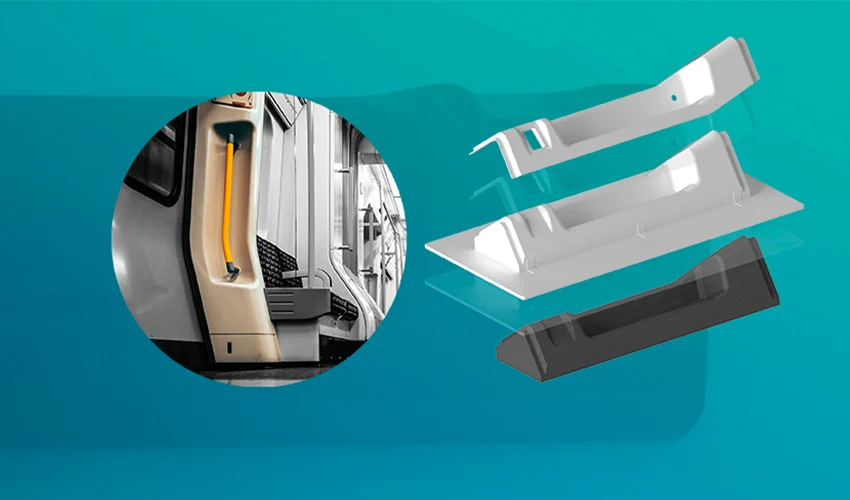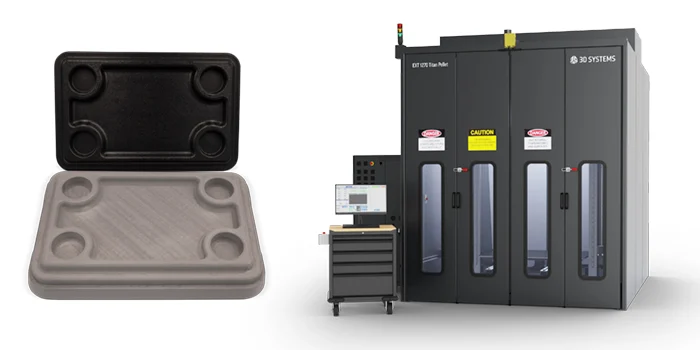Reduce Thermoforming Mold Production Time & Costs With 3D Printing

SPONSORED CONTENT
Thermoforming companies and manufacturers face intense competitive pressure to enhance production efficiency, reduce waste, and minimize costs. At the same time, the industry is contending with a shortage of skilled labor. Fortunately, additive manufacturing (AM) offers a promising solution. Additive manufacturing enables the production of high-performance molds that form superior parts while drastically reducing lead times and labor costs compared to traditional mold-making methods. By leveraging AM, companies can streamline their processes and improve overall efficiency. In this webinar, titled “Revolutionizing Thermoforming: Unleashing Efficiency to Drastically Reduce Mold Production Time & Costs“, you will learn how to achieve rapid validation by testing shapes and delivering first parts up to 65% faster with 3D printed molds.
WATCH NOW
Experts from 3D Systems will show how the company’s thermoforming customers claim to have run thousands of shots of 3D printed molds with virtually no signs of wear or performance degradation. Register now and discover how other companies used our pellet extrusion technology to decrease cost and shorten lead times for large thermoforming molds!
Subtractive vs. Additive Manufacturing Molds
 Additive manufacturing offers significant advantages over subtractive manufacturing, particularly in design flexibility, production speed, and cost efficiency. Unlike traditional methods that require compromises in geometric features, AM allows for the optimization of specific application needs. The turnaround times are notably faster; 3D printing can produce molds within hours or days, compared to the weeks or months needed for traditional mold-making. This approach minimizes waste and reduces raw material costs by creating near-net shapes, allowing manufacturers to machine printed parts instead of large blocks of material.
Additive manufacturing offers significant advantages over subtractive manufacturing, particularly in design flexibility, production speed, and cost efficiency. Unlike traditional methods that require compromises in geometric features, AM allows for the optimization of specific application needs. The turnaround times are notably faster; 3D printing can produce molds within hours or days, compared to the weeks or months needed for traditional mold-making. This approach minimizes waste and reduces raw material costs by creating near-net shapes, allowing manufacturers to machine printed parts instead of large blocks of material.
Cost Efficiency and Material Benefits
Material and part costs are much lower with AM compared to traditional ceramic, metal, and wood molds. Polymers, in particular, offer longer shelf life and better resistance to environmental factors such as moisture and temperature than wood. AM also facilitates the creation of porous molds, which optimize molten plastic flow by eliminating the need for drilled vacuum channels. Additionally, maintaining a digital inventory of molds removes the need for physical storage. Users can recycle printed molds and retain their digital files, making mold replacement quick and easy through reprinting.
Traditional vs. Additive Manufacturing in Thermoforming
In conventional thermoforming, plastic sheets are shaped over patterned molds, often using vacuum forming to pull the plastic sheet over the mold. These molds can be produced via various methods, such as CNC machining of metals and ceramics or even hand-sculpting wood. Subtractive processes typically involve CNC milling and tooling, where material is selectively removed from a block to achieve the desired shape. In contrast, AM builds a part layer by layer on a build platform, using only the necessary material. This allows for the creation of parts from a wide range of polymers, including standard and high-performance thermoplastics, thermosets, filled and photopolymer resins, and even metals. AM systems range from small desktop units to large-format industrial machines, offering versatility in production capabilities.
Webinar Agenda
- Introduction
- The Customer Challenge: Cost, Lead Time & Inventory
- The Additive Solution:
- Industrial, Large-Format Platforms
- Pellet Extrusion vs. Filament Extrusion
- Tips & Best Practices for Printing Molds
- Assorted Customer Use Cases
- Conclusion and Q&A
Speaker: Haley Stump
 Haley Stump is the Application Engineer Lead for the Titan division of 3D Systems. She leads projects involving the advanced EXT Titan Pellet 3D printing system. Previously, she worked with Titan as a customer, developing time and cost-saving manufacturing methods for a global retail merchandising company. She joined the 3D Systems team in Colorado Springs in 2022 and collaborates closely with the sales team to provide tailored solutions for various applications such as patterns, tooling, prototyping, and end-use products.
Haley Stump is the Application Engineer Lead for the Titan division of 3D Systems. She leads projects involving the advanced EXT Titan Pellet 3D printing system. Previously, she worked with Titan as a customer, developing time and cost-saving manufacturing methods for a global retail merchandising company. She joined the 3D Systems team in Colorado Springs in 2022 and collaborates closely with the sales team to provide tailored solutions for various applications such as patterns, tooling, prototyping, and end-use products.
